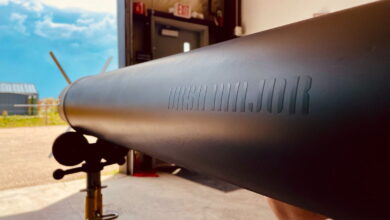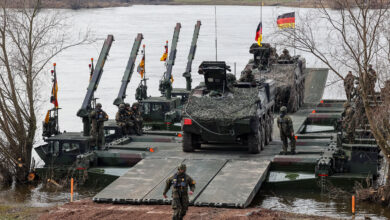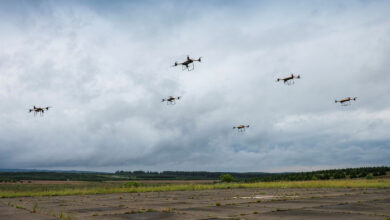The US Army Garrison Bavaria has conducted a ground-breaking ceremony to start the construction of a military canine complex in Grafenwöhr, Germany.
The $4.6-million project aims to establish a permanent, standard-design working dog center to replace the current military kennel built over 100 years ago, the service wrote.
“This kennel is long overdue,” US Army Garrison Bavaria Commander Col. Kevin Poole stated.
“We have to take care of our canine friends of the 131st Military Working Dog Detachment. It breaks my heart every time I walk into this kennel.”
“I have been helpless for the last year, but we move a step further now that we are about to break ground on this facility.”
Construction After Delay
Plans for the new kennel were made in 2014, with construction scheduled for 2019. However, the COVID-19 pandemic and following economic climate delayed the center’s development.
“Our old building was built in 1914, and it needed a massive upgrade for health and standard reasons for the dogs, so they have good care and health while they stay with us,” 131st Military Working Dog Detachment’s Staff Sgt. Nicholas Ames said.

The current complex will remain operational throughout the construction until the new facility is ready for occupancy by October 2025.
“The military working dogs that are stationed here provide law enforcement support for USAG Bavaria,” Europe Combined Military Working Dog Detachment’s Sgt. 1st Class Steven Staples stated.
“They are also a deployable asset. We deploy to several different locations wherever the mission requires. To have these dogs housed well in proper kennels and to make sure that their health is taken care of is of the utmost importance for the safety of the community.”
“They are also a deployable asset. We deploy to several different locations wherever the mission requires. To have these dogs housed well in proper kennels and to make sure that their health is taken care of is of the utmost importance for the safety of the community.”
Sustaining ‘Proper Training, Safety’ of Canine Teams
The new facility will cover 5,070 square feet (471 square meters). Alongside training rooms and kennels, the complex will have food prep and storage, administrative offices, supply spaces, a medical examination division, and multipurpose areas.

“We have narcotics dogs and explosive detection dogs, and they all have bite work capabilities, so they are able to chase down a bad guy, find them and bite them,” Ames explained.
“We are composed of seven dogs, the maximum the kennel can offer at the moment. With the new building we will be able to house 14 dogs in total.”
US Army 18th Military Police Brigade Commander Col. Richard Stearns added that the facility will secure the “proper training, safety, and wellbeing” of the service’s working dog teams to further demonstrate their role as a strategic asset for European, African, NATO, and other federal missions.
Military Dogs in US Army
Current military working dog training in the US Army requires 120 days of preparation at the Joint Base San Antonio in Fort Sam Houston, Texas. This is followed by field deployments and constant training at their installations.
The canines commonly retire at approximately nine years of age and usually into the care of their former handler.












